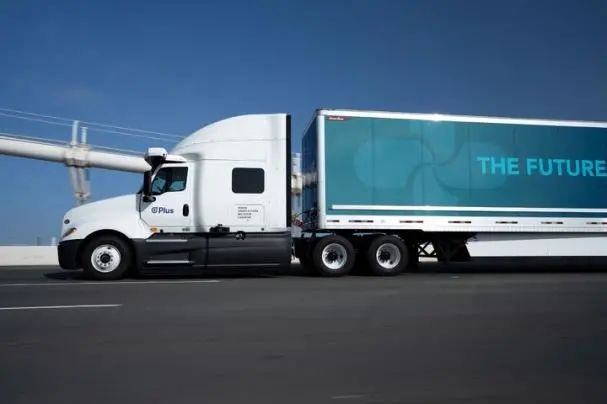Cummins Integrated Power System and Truck Autonomous Driving
As the world’s largest independent engine manufacturer, Cummins is committed to integrating its power system with truck autonomous driving systems. Cummins announced that integrating hardware and software into its power system has brought optimal performance and fuel economy, and it will launch a series of software features to integrate its power system with expanded autonomous driving system (ADS) technology.
Cummins is also collaborating with autonomous driving technology companies such as Embark, Kodiak, Plus, and TuSimple, and has already tested more than 100 vehicles. Cummins hopes to ensure seamless integration of the power transmission system with the ADS autonomous driving system solution as it enters the global commercial vehicle market.
TuSimple began collaborating with Cummins as early as January 2019 to combine its autonomous driving technology with truck power systems.
In April 2021, heavy-duty autonomous driving company Plus announced its collaboration with leading engine manufacturer Cummins to jointly develop the world’s first supervised natural gas heavy-duty truck. The new vehicle is expected to be launched in 2022.
In September 2021, Kodiak Robotics showcased its fourth-generation autonomous driving truck with the Cummins X15 series engine. The ADS power transmission system interface of the engine allows the autonomous driving system to communicate with the engine.On September 21st, 2021, Embark announced its collaboration with Cummins to accelerate integration of the next-generation truck components and autonomous driving systems. Under this partnership, Embark is testing Cummin’s autonomous driving system powertrain interfaces to manage the operation of powertrain systems. Integration of Embark’s universal interface (EUI) that is independent of truck brand platforms and Cummins’ powertrain system will enable Embark to utilize the ADEPT™ powertrain system from Cummins, thus improving fuel efficiency and the performance of autonomous driving systems. Cummins will provide engineering support, including installation, operation, system specifications, and other technical information, to assist Embark in testing and validating the powertrain interface of EUI. Embark will share test data and results so that Cummins can further support the continuous development of EUI and improve its independent powertrain components.
Cummins plans to support customers by deploying autonomous driving technology across its entire range of power systems, including advanced diesel, natural gas, hybrid or full electric, and hydrogen fuel cell power systems.
Frontline View of Truck Technology
Autonomous driving truck hub-hub transportation is seen as the first scenario to land, which currently uses traditional power, while electric trucks still have a long way to go. In contrast, Robotaxi mostly uses pure electric passenger cars, which are easier to control.
Autonomous driving trucks require coordination with various ECUs in the vehicle in addition to operating the steering wheel, accelerator, and brake pedals.
In the gradual realization of autonomous driving features, autonomous driving technology companies have recognized the necessity of interacting and controlling power systems (including engines, transmissions, ECUs/TCUs, etc.).
Improving economic potential through promotion will help with user TCO even when drivers have not yet been completely eliminated.
Pure autonomous driving cannot improve economic efficiency, and it is only possible to improve power economy based on coordination between maps, V2X, and power control systems.
Autonomous driving trucks can only talk about practical implementation after adapting to vehicle characteristics, application scenarios, logistics systems, infrastructure, and other factors. Coordination with power systems is just the first step, but entering this stage also indicates that autonomous driving technology itself is gradually maturing.
The purpose and reason for jointly choosing Cummins is to leverage Cummins’ position as a general powertrain supplier and its market position in North America. Collaboration between autonomous driving truck companies and Paccar, Volvo, Daimler, and others may eventually involve integrated control of powertrain systems.The powertrain ADS interface will become a bridge between autonomous driving and powertrain, but it also requires autonomous driving companies to cooperate with powertrain manufacturers or truck OEMs, which may form a mutually restrictive relationship. After all, autonomous driving truck technology companies have no plans to build their own trucks, which is completely different from Tesla and XPeng Motors.
Fun Fact:
The average annual fuel cost for a tractor is 192,000 yuan (according to the “Chinese Truck Driver Survey Report” by the Sociology Department of Tsinghua University in 2017). If fuel consumption is reduced by 5%, it would amount to about 10,000 yuan.
This article is a translation by ChatGPT of a Chinese report from 42HOW. If you have any questions about it, please email bd@42how.com.
